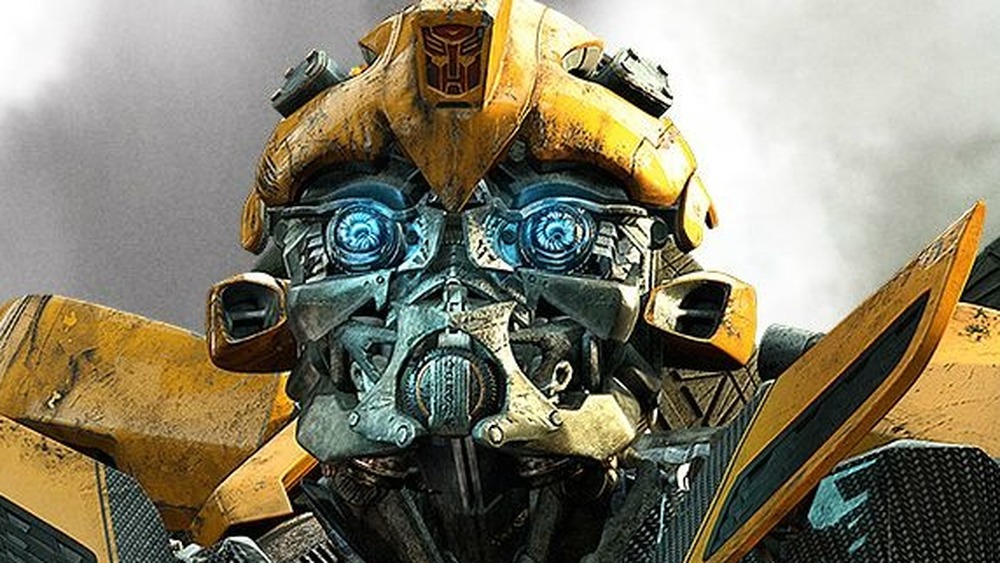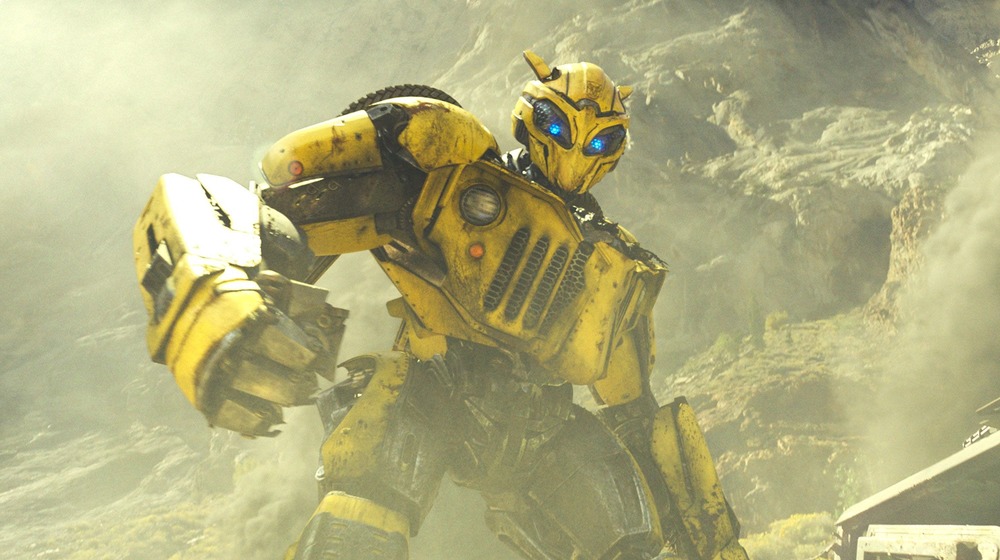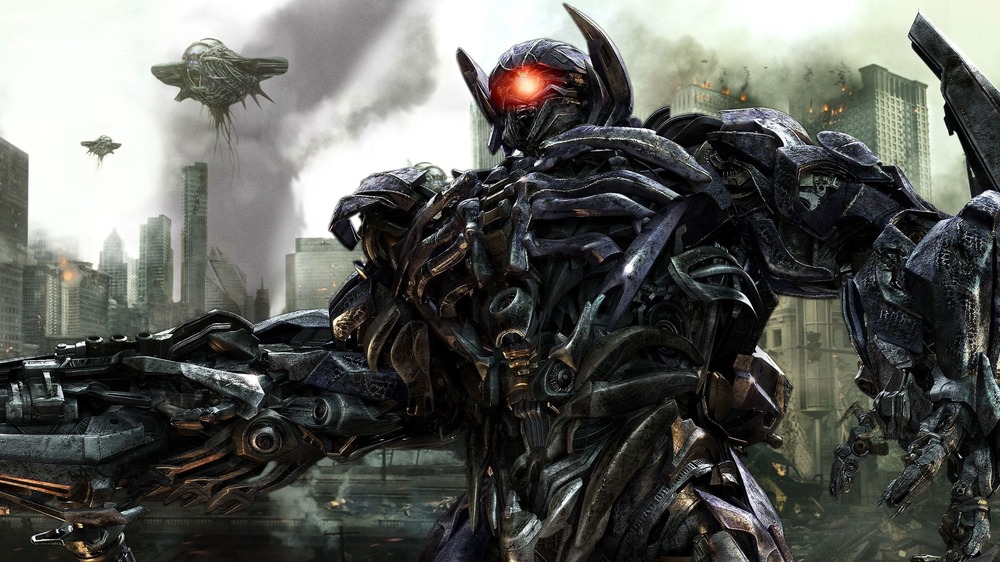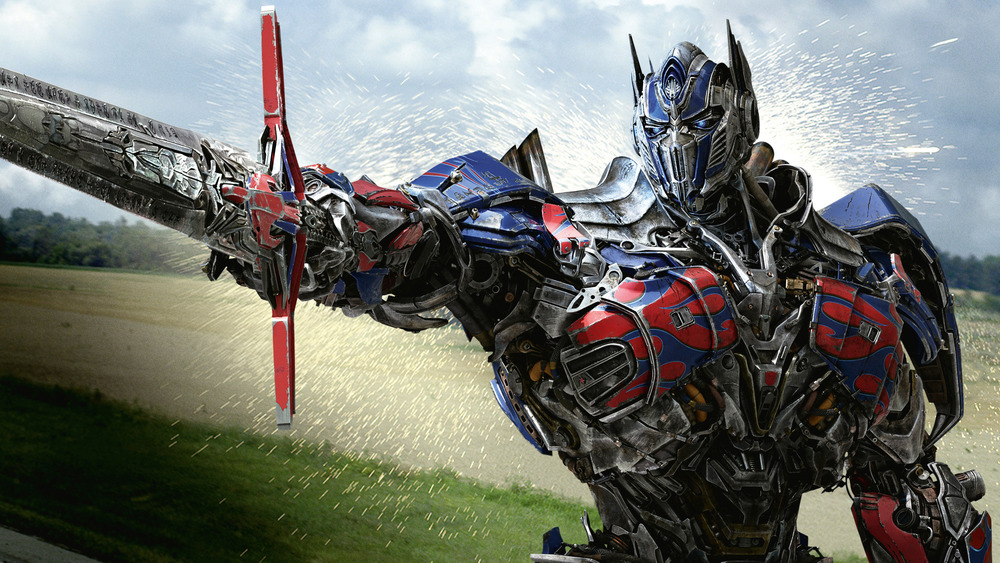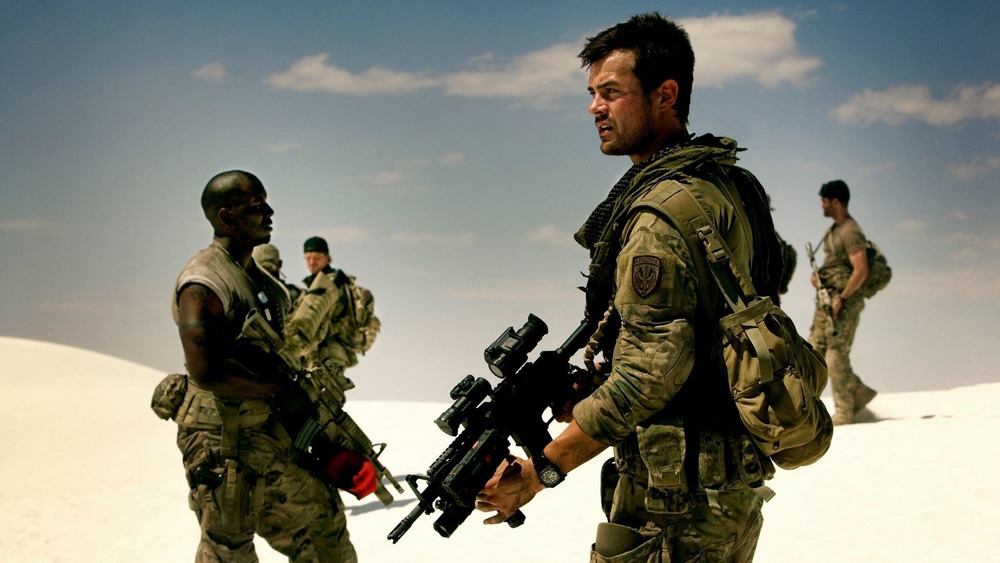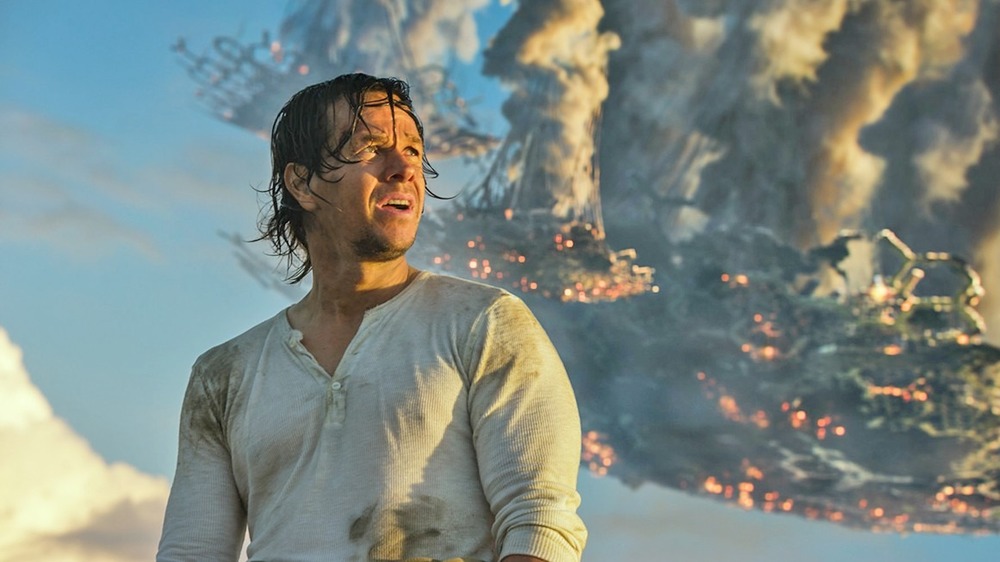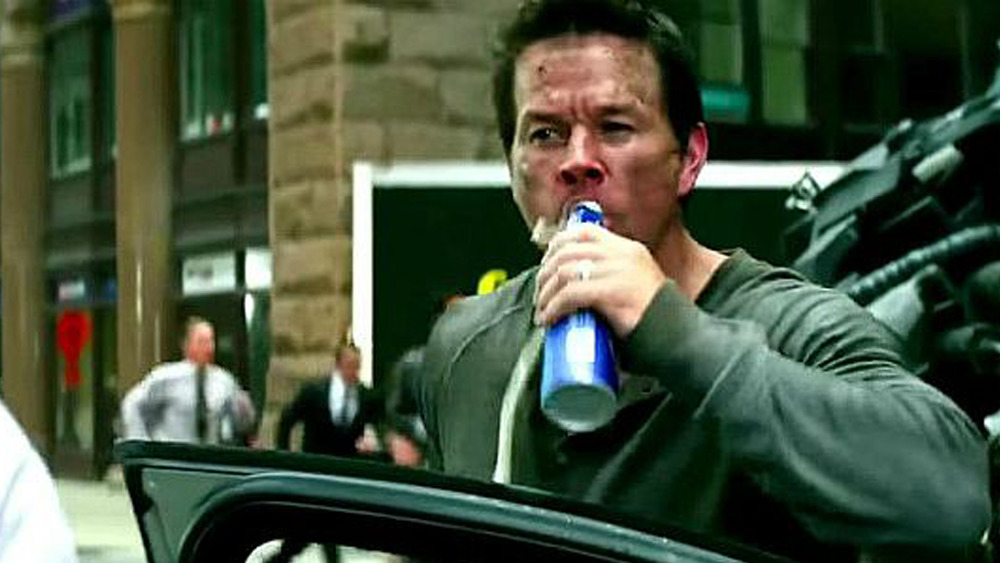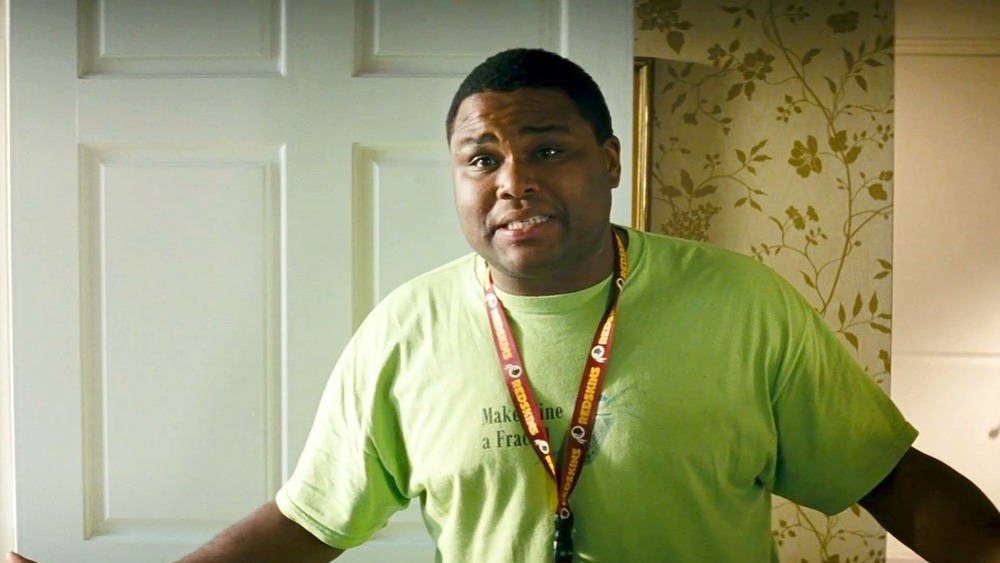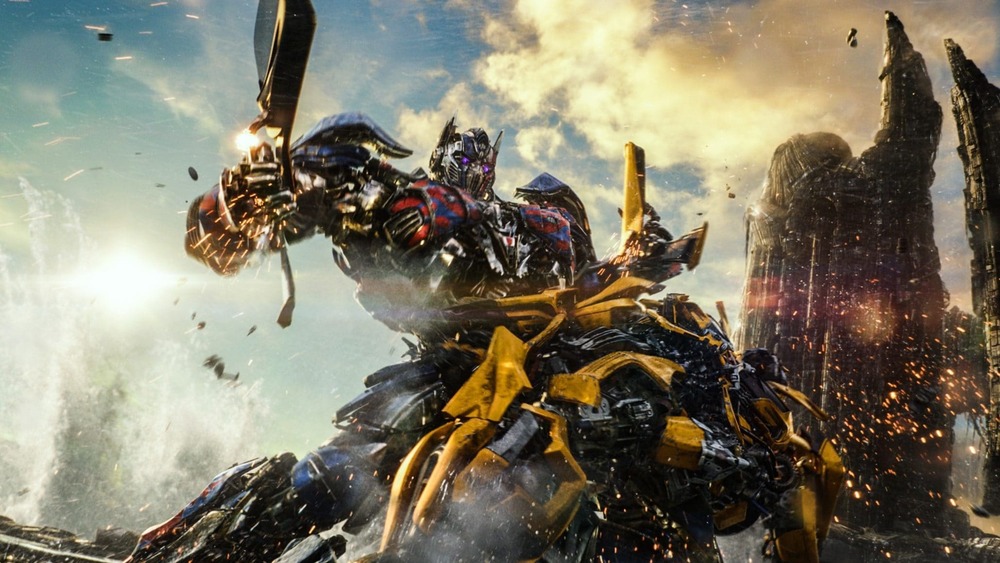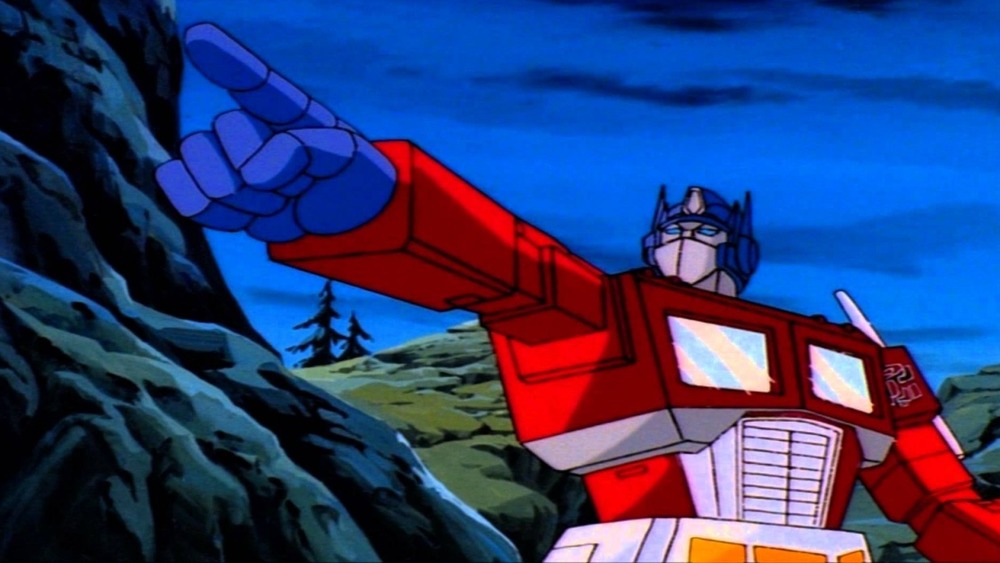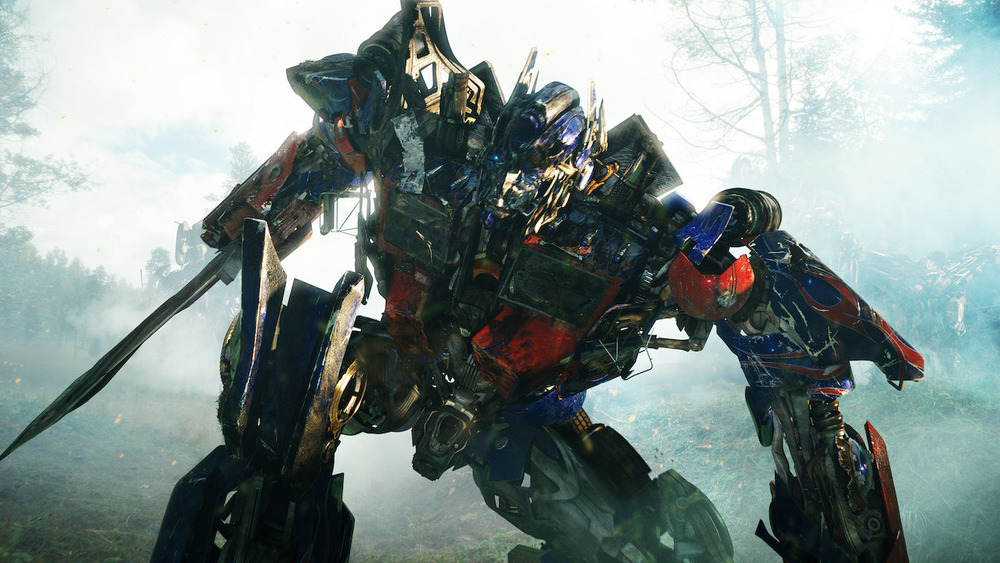Things That Happen In Every Transformers Movie
It wasn't always a certainty that the Transformers would work as a live-action movie franchise. Even director Michael Bay initially turned down directing the first Transformers because of his lack of confidence in a movie based on a toy. But once the 2007's Transformers became a worldwide smash hit, the producers behind this series were determined to keep the golden goose alive and thriving.
This meant making sure the series adhered to a rigid formula. In the process, the Transformers movies established a number of traits that could be counted on to appear in each installment as often as the CGI robots themselves. Much like exotic locales and sexy ladies in the James Bond movies, the Transformers movies have their own hallmarks that have come to define the franchise.
In fact, they've become so defining that even Bumblebee, the first entry not directed by Michael Bay, still carries over traces of these elements. It's a testament to just how much the staples of the Transformers franchise have become interwoven into this series. Some of these hallmarks are byproducts of Bay himself, while others stem from concerns over alienating moviegoers who aren't diehard fans. While the reasons behind these rules vary, if you press play on a Transformers movie, you're bound to see them unfold (and explode) on your screen.
Optimus Prime and Bumblebee appear in every Transformers movie
Across the six live-action Transformers movies, a number of characters come and go. Some, like original human protagonist Sam Witwicky (Shia LaBeouf), just vanish after their third appearance before being implied to have died off-screen in Transformers: The Last Knight. That's still better than human characters like Secretary of Defense John Keller (Jon Voight), who only appear in one movie. Others, like Autobot warriors Ironside and Ratchet, have their presence in the franchise cut short by harrowing on-screen deaths to signify the brutality of enemy forces. But across all these movies, there are two characters that have managed to survive every circumstance thrown their way — Optimus Prime and Bumblebee.
Given that these two have been fan-favorite characters dating all the way back to the 1980s Transformers cartoon, it's no surprise that Optimus Prime and Bumblebee should also factor heavily into the various live-action Transformers movies. Throughout these titles, Prime is supposed to function as a wise leader that characters and viewers can turn to for guidance. He's also someone who's formidable in combat and is defined by a love for ripping off the faces of his robot enemies. As for Bumblebee, he serves as a loveable sidekick and someone who can develop bonds with the human leads of the Transformers movie. Though they may occupy different roles depending on the story (Prime briefly takes on an antagonistic role in The Last Knight, for example), Optimus Prime and Bumblebee are as a constant as air and water in the Transformers movie universe.
Decepticons are the baddies
In certain blockbuster franchises, heroes typically face an assortment of villains. The Avengers, for example, fight everyone from Ultron to Loki to Thanos across their four movies. In the case of the Transformers movies, though, the enemies are always those nefarious Decepticons. The adversaries to the Autobots dating back to when they were fighting on the planet Cybertron, the Decepticons are usually led by Megatron, and they're typically pursuing a variety of hidden MacGuffins on Earth (like the Matrix of Leadership) that will result in the destruction of the human race.
Even movies that attempt to deviate from the traditional norms of Transformers movies end up adhering to this rule. Transformers: Age of Extinction, for instance, introduces a robot bounty hunter named Lockdown as the main robot baddie who belongs to neither the Autobots or Decepticons. By the end of the movie, though, Lockdown's initial insistence on not belonging to either side is superfluous. He might as well have a Decepticon insignia on his body given how he heartily fights alongside Galvatron (Megatron's resurrected form) against Optimus Prime and the other Autobots.
Meanwhile, smaller-scale entry Bumblebee might ditch Megatron and large armies of Decepticons but that doesn't mean those robots aren't around in some capacity. A pair of Decepticons named Dropkick and Shatter still serve as the films primary antagonists, causing problems for both human beings and Autobot warrior Bumblebee alike. No matter where these Transformers go, the Decepticons can't be far behind.
The Transformers impact human history
An unexpected connective tissue across all the Transformers movies is how the Transformers have heavily influenced major historical events on Earth. Whereas in the original cartoon, the Transformers only came to Earth when the show started, the films have depicted these robots as being involved in this planet for centuries. This begins with the first Transformers movie, which reimagines the 2003 Mars Exploration Rover as part of evidence that the Decepticons are headed to Earth. The sequels take this even further by providing explanations for the building of the Egyptian pyramids, the 1969 moon landing, and the extinction of the dinosaurs that tie directly into the Transformers and their lore.
This hit its peak with Transformers: The Last Knight, in which the legends of King Arthur were intertwined with Transformers ... as well as basically every other major historical event in history. A secret society known as the Witwiccans is revealed to be keeping the presence of Transformers in events like the Underground Railroad and World War II hidden. Even Bumblebee, which mostly eschews this trait, still uses an establishing shot of Sector Seven's headquarters to remind viewers of a fact established in the original Transformers movie concerning how the Hoover Dam was constructed for Transformers-related purposes.
Considering that the idea of Transformers influencing all of human history is absent from other media incarnations of these characters, this is a particularly puzzling part of the frequently baffling Transformers franchise.
Transformers movies always have a positive view of the military
In Michael Bay's movies, the U.S. military usually gets depicted in an unequivocally positive light. But if people following his career thought Pearl Harbor would be the apex of Bay's pro-military filmmaking, the Transformers movies were to prove them wrong.
The very first scene in 2007's Transformers is set on a U.S. military base before leading into a subplot involving U.S. military soldiers like Lennox (Josh Duhamel) being on the run from Decepticon Scorponok. This sets the tone for the movies that follow, which not only heavily feature U.S. military personnel in key supporting roles but also show off technology belonging to the U.S. military branches being used to take down evil robots like Devastator.
The Transformers movies and their love for all things military doesn't just relate to U.S. branches. The franchise has extended this trait to include love for international military forces thanks to the installment Transformers: Age of Extinction. A film that was heavily shot in China and partially financed by Chinese companies, the film has a loving portrayal of the Chinese military, which includes an uncomfortable moment where China's defense ministers observes that the Chinese military will always protect Hong Kong. The blind loyalty to powerful military forces is largely eschewed for Bumblebee, but it still finds time to turn former U.S. military colonel Jack Burns (John Cena) into a heroic figure.
The humans get the spotlight
Though the movies are called Transformers, the titular robots are never the lead characters in their own films. Instead, live-action humans are the central focus of the proceedings, with characters like Sam Witwicky, Cade Yeagar (Mark Wahlberg), and Charlie Watson (Hailee Steinfeld) being the people who get the spotlight in these films. While the various Autobots and Decepticons still get lots of screen time, it's the flesh-and-blood humans, not metallic aliens, that occupy the role of protagonists. Even supporting human characters like Leo Spitz (Ramon Rodriguez) tend to receive a greater amount of time in the spotlight compared to the robotic characters these movies are supposed to be about.
Like a lot of hallmarks of the Transformers franchise, the decision to make these films so human-focused stems from the original Transformers movie. When talking about the process of making the 2007 film, producer Tom DeSanto explained to Latino Review, "You need a human element in order to have the audience who isn't familiar with Transformers introduce them into the world. That's why Wolverine wasn't a part of the team in the first X-Men. He was the eyes and ears of the audience. ... It's the same things here with the humans."
DeSanto also noted that providing an audience point-of-view character wasn't the only reason behind making the first movie so human-heavy. Budgetary concerns about doing a film focused exclusively on CGI robots also factored into putting the focus on people. Subsequent Transformers movies have followed suit from this initial entry and chosen to zero in on the human beings.
Transformers movies feature lots of product placement
Like any movie based on a toy, the Transformers movies are commercials unto themselves for the products they're based on. Given that the Transformers toy line gets highlighted in every frame of this franchise, it seems like the producers decided to go for an "in for a penny, in for a pound" approach here, and they began shoehorning in product placement throughout all the Transformers movies.
The initial entry in the franchise makes time for highlighting Burger King, Nokia, and Xbox, not to mention a big crowd-pleasing moment that practically salivates over Camaro cars. This trait only gets worse in subsequent movies. For example, Transformers: Revenge of the Fallen gave GM a huge spotlight, but it also took time to give some glaring love to brands like U-Haul, Sprint, and Harley Davidson. And Age of Extinction scored the most product placement of any movie in 2014, which included a scene where Mark Wahlberg's Cade Yeager enthusiastically busts open a bottle of Bud Light.
Interestingly, The Last Knight appears to have been the last straw for how much product placement audiences will tolerate, at least in some countries. According to The Hollywood Reporter, a sequence involving a Texas character exploring a Chinese used-car website inspired laughter in Chinese theaters.
New comic relief characters come and go
Comic relief characters have a short shelf life in the Transformers universe. Just look at Anthony Anderson's Glen Whitmann from the first film. We learn a lot about Whitmann in his Transformers screen time, including how many songs he's illegally downloaded from the internet. Despite getting so much backstory, he never returned to the franchise after his single appearance. The same can be said for Revenge of the Fallen's Leo Spitz. He's Sam Witwicky's college roommate and ends up going on the big adventure to Egypt without contributing much to the plot. Despite Michael Bay initially saying that Spitz would have a larger role in the third Transformers movie, he never showed up again in the franchise.
On and on this trend goes in the Transformers franchise. Ken Jeong's Jerry Wang in Transformers: Dark of the Moon barely lasts a few scenes before getting tossed out a window by Laserbeak. T.J. Miller's Lucas Flannery in Age of Extinction doesn't even reach the 45-minute mark getting slaughtered. Jerrod Carmichael's Jimmy in The Last Knight only sporadically appears in the film. The erratic presence of these comic relief characters is puzzling, though it does offer an advantage for the films' producers in how it allows the series to constantly cast new "buzzy" comedians in supporting roles. Given how this franchise is dictated by the most cynical marketing wisdom, it wouldn't be a surprise if that was why comic relief characters in the Transformers movies never stick around.
The Transformers are hated by the public
Across the Transformers movies, humans absolutely despise the Transformers. It's an unexpected plot point given how that dynamic wasn't a prominent part of earlier Transformers lore. But that hatred was established from the first live-action Transformers, with members of the secret agency Sector Seven showing casual disregard for Bumblebee and the other Autobots. And Transformers: Revenge of the Fallen sees Theodore Galloway (John Benjamin Hickey) as the human embodiment of criticism of the Transformers.
This hatred only intensifies in Dark of the Moon, where the humans try and send the Transformers away from Earth, and Age of Extinction, where human beings gleefully hunt down Transformers. The Last Knight also opens with a sequence depicting gigantic posters adorned with Optimus Prime's face and text proclaiming that the Autobots need to leave Earth. Even the light-hearted Bumblebee sees human antagonists harboring a distrust for robots.
This appears to be a recurring element as a way of cementing the Transformers as underdogs. Sure, they're powerful, gigantic aliens, but life isn't all perfect for these robots who are hated by the very people they protect. In the case of the five Michael Bay movies, it's also a way these blockbusters fit into the nihilistic worldview of Bay. The man responsible for Pain & Gain has a bleak view of humanity, and that's extended to how his Transformers movies show human beings reacting to Transformers not with wonder or gratitude but seething hatred.
There are plenty of homages to the 1980s cartoon
Even before the Transformers movies began, those robots in disguise had gone through multiple different incarnations in pop culture thanks the seminal 1980s cartoon series. This program has defined all subsequent appearances of the Transformers in pop culture, particularly in how Peter Cullen has gone on to voice Optimus Prime in numerous other Transformers properties, including the live-action movies.
However, while the live-action films have mostly limited themselves to taking inspiration from the G1 cartoon, there is one major exception to this rule — the use of Lockdown, a character introduced in the 2007 program Transformers: Animated. But otherwise, all six live-action Transformers movies have taken their creative cues from the 1980s incarnation of these characters, with the most recent live-action movie, Bumblebee, being more explicit than ever in these homages by making the robots look exactly like their G1 versions.
Transformers movies always feature large-scale action sequences
Dating back to his earliest days as a filmmaker on Bad Boys, it's been readily apparent that if you hire Michael Bay for a movie, you're gonna get big-scale action sequences. You'll probably struggle to fully grasp that scale given the shaky camerawork and editing, but yes, you'll get massive action sequences.
This has only become more true as the Transformers movies have gone along. With CGI robots at his disposal, Bay's canvas for explosion-laden mayhem has been constantly expanding. The first movie ended with a shootout in a few neighborhood blocks in Los Angeles, but Revenge of the Fallen exceeded that one with a finale set at the Pyramids of Giza. Dark of the Moon dedicated its entire third act to depicting the city of Chicago being a battleground for a massive battle between Autobots and Decepticons. This ever-growing sense of scope reached its zenith with The Last Knight, when a giant planet began to pour its tendrils into Earth to awaken Unicron.
This penchant for thrilling large-scale action sequences even continued with Bumblebee, which intentionally took the Transformers movies down to a more intimate angle. Though Bay wasn't behind the camera of this entry, newbie director Travis Knight couldn't resist opening up Bumblebee with a prologue that depicted an expansive set piece depicting the Autobots and Decepticons duking it out on Cybertron. At this point, large-scale action set pieces are as integral to the Transformers franchise as Linkin Park needle drops.
